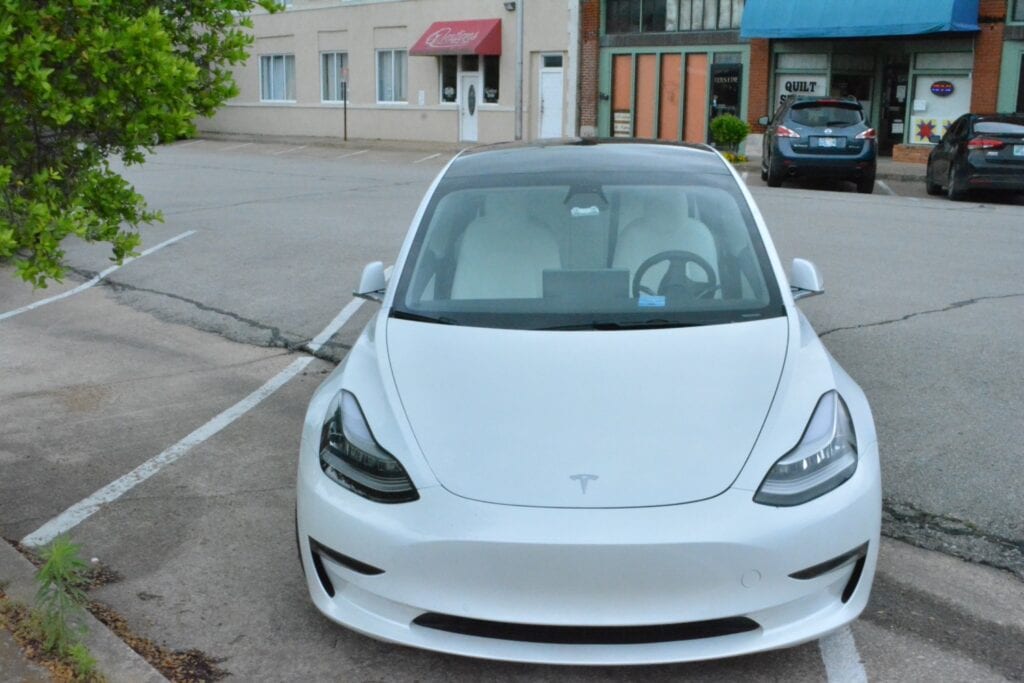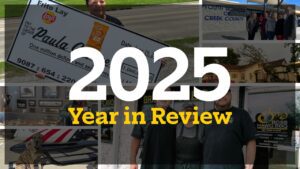Magazines in the 1950s predicted we would be traveling in flying cars by now. Automobiles are still earth-bound, but the standard method of propulsion is changing. The number of EVs (electric vehicles) doubled from 2018 to 2020. Many manufacturers have since announced that by 2030, a vast majority of their vehicles—if not all—will be EVs. There are an estimated 100 electric vehicle models scheduled to debut by the end of 2024. The most prolific mass-produced electric vehicle is the Tesla.
In 2008, Tesla Motors introduced its first car, the Tesla Roadster. In 2012 Tesla ceased production of the Roadster and introduced the Model S Sedan. Tesla made a semi-autonomous driving feature available in 2014, called the “Tesla Autopilot.”

The Model 3 rolled out in 2017, featuring dual electric motors, making it an All Wheel Drive (AWD) vehicle. This sports sedan can accelerate from 0-60 miles per hour in an astounding 3.1 seconds and reaches 162 mph. The electric motors generate an impressive 336 KW of energy, which is equal to 450 horsepower. Surprisingly, the family supercar has an EPA-estimated range of 353 miles on a complete charge and has an efficiency rating equal to 134 miles per gallon.
I recently had the rare opportunity to drive a 2020 Model 3 Sedan. I must state, unequivocally, that driving this engineering marvel was the most exhilarating and intriguing automotive experience of my life.
David Nguyen, of Tulsa, ushered me into the driver’s seat of this captivating craft. Once I was behind the steering wheel, my first challenge was figuring out how to start the car. That proved unnecessary, as the owner had used an app on his phone to serve as the “key.” You may also place the smart card which serves as the factory key on the door frame to unlock the vehicle, then place the card on the specified spot on the console.
My next step was movement. All I had to do was place my foot on the brake, pull the gear shift lever down, and release it, then apply pressure to the throttle pedal to begin backing out of the parking space. To go forward, I repeated the process except for pushing the lever upward.
The most awkward part of learning to drive the Tesla is learning how to use the brakes. In an internal combustion engine vehicle, you normally take your foot off the gas pedal and the car will coast until you apply the brakes; not so in a Tesla. The minute you take your foot off the gas, the car’s computer system turns the electric motors into generators to recharge the batteries and slow the vehicle.
The most amazing accouterment in the cockpit is a massive monitor which serves as the instrument panel, navigation, entrancement, rear, and side-view mirrors, interface with the Tesla Company mainframe and more.

I went East on Dewey, turned left then proceeded north on Misson, eventually entering the Creek Turnpike, heading east. I came to a crawl on the entrance ramp then “put the pedal to the metal.” I was immediately pushed back in my seat and within a matter of few seconds, I attained a speed that I am not going to divulge for fear of reprisal from the local police.
Once on the turnpike, David engaged the autopilot. With much trepidation, I sat there with my hands ready to grab the wheel, as the vehicle drove itself. I exited southbound US 75, later exiting Highway 117. On the way back into town, there was a vehicle that was following very closely. jabbed the accelerator, leaving the other car “in the dust.
We pulled into a parking lot on Taft St, and I parked the car, which involved engaging the parking brake. This was accomplished by pushing and holding a button on the end of the gearshift lever.
Then I was treated to the most fantastic function called “Smart Summon.” We exited the vehicle and walked across the parking lot. David used his smartphone to bring the driverless car over to us.
I have driven my share of unique and powerful vehicles, but I must say that without a doubt, The Tesla Model 3 is the most phenomenal car I have ever driven. It combines speed, handling, and economy with the ultimate geek factor. As one software engineer put it, “the Tesla is a computer that happens to be a car.”
There are several reasons for purchasing an electric car, such as fuel savings, much less maintenance, and combating climate change. One reason often overlooked is the health impact of air pollution. A Duke University study showed that each gallon of gasoline carries $3.80 in health and environmental costs. A gallon of diesel fuel carries an additional $4.80 in social costs.
The prevailing ecological opposition to electric vehicles is the pollution caused by the mining and disposal of lithium-ion batteries. As far as disposal, recycling techniques are now in place and are improving. China now recycles more lithium-ion car batteries than anyone else in the world. Also, we are on the cusp of a revolution in battery technology. Batteries have been developed that use such materials as silicon and graphene and will eliminate or lessen the number of rare earth metals needed. They will reach a full charge in a matter of minutes, discharge 33 times faster, have a longer life, and will have at least 10 times the energy density which means that batteries can provide much more power while weighing substantially less.
Whether we like it or not, electric vehicles are here to stay and will most likely be the predominant propulsion technology for cars, trucks, SUVs.










